
Descubra sua estadia em Fanshi
Insira as datas de viagem para verificar a disponibilidade e os preços atualizados
Deslize para cima para ver mais
Filtrar por:
Classificação de hotéis por estrelas
≤2345
Filtros mais utilizados
Incrível 4,5+Ótimo 4.0+Bom 3.5+Agradável 3.0+Encontramos 18 hotéis para você em Fanshi
Escolha suas datas de viagem para ver os preços atualizados.
Mais escolhido
Preço mais baixo
Mais próximo do centro da cidade
Melhores avaliações
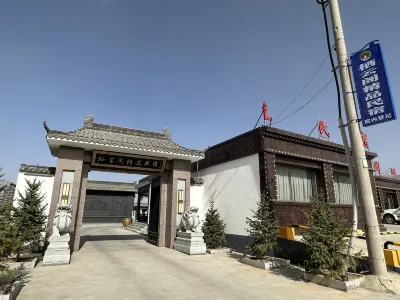


Hotel próximo a Fanshi
GGuest User 2023.10.03
Service: The service was unexpected. The little brother helped plan the route. The most important thing was that they cooperated with Hong Wuji in the ancient city. They didn't have to wait for the table to go directly to eat. This is great 👍🏻! I will consider his home next time I go! recommend
Perfect
35 avaliações
4.9/5
Preço a partir de
R$ 236
por noite



Hotel próximo a Fanshi
GGuest User 2024.10.15
The hotel is a luxury hotel in the heart of the city, the overall environment is elegant, comfortable, and the service attitude is very thoughtful. From check-in to check-out, the hotel staff always keep smiling and polite, making guests feel at home. The hotel's rooms are fully equipped, luxuriously decorated, comfortable with comfortable beds, high-end bathing facilities and modern technology equipment. Additionally, the hotel has multiple restaurants and bars offering a wide selection of food and drinks. For guests who need a break, the hotel also offers leisure facilities such as a spa, gym and indoor pool. Overall, the hotel is a quality hotel with excellent service attitude and good hardware facilities to meet various travel and business needs. Overall, this is a highly recommended and patronised hotel for guests looking for a luxurious and comfortable stay.
Perfect
7 avaliações
5.0/5
Preço a partir de
R$ 126
por noite
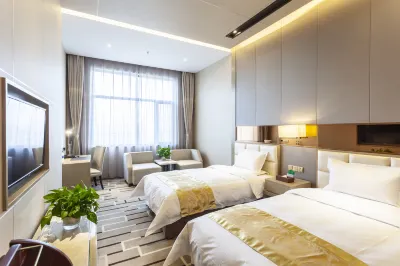
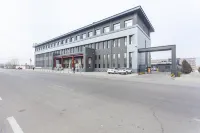
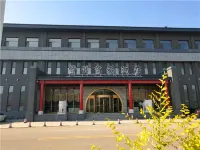
Hotel próximo a Fanshi
GGuest User 2023.12.16
Generally, the living environment is a bit small, the sanitary environment is also general, not as good as the feeling of living before, too old hotel. A lot of lights are not in the room, not worth the price
Very Good
27 avaliações
4.0/5
Preço a partir de
R$ 138
por noite

Talvez você prefira
Hotéis com café da manhãHotéis com quarto twinHotéis com 1 cama de casalHotéis com piscinaHotéis com cancelamento grátis



Hotel próximo a Fanshi
GGuest User 2024.08.05
Casually set unexpected surprises, facilities are good, the room is large, I like it, and the decoration style is also very like, there is a disposable toilet, much better than the double price hotel I stayed in Pingyao, breakfast is also delicious, like the north millet porridge.
Outstanding
36 avaliações
4.8/5
Preço a partir de
R$ 84
por noite
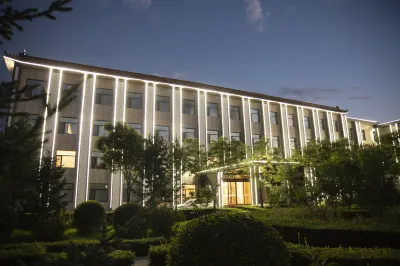

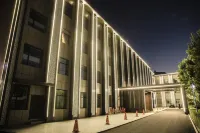
Hotel próximo a Fanshi
GGuest User 2023.10.06
The front desk staff is friendly, the room is clean, the yard is large, parking is very convenient, and the price-performance ratio is high. However, due to the new decoration, there is still some smell in the room. Overall, it is still recommended to stay!
Excellent
48 avaliações
4.5/5
Preço a partir de
R$ 132
por noite
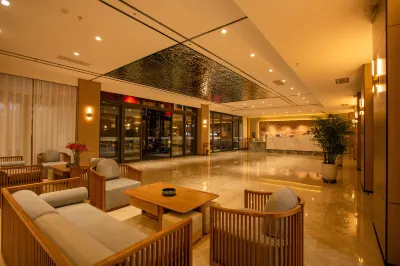
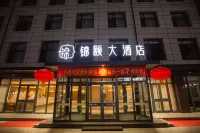
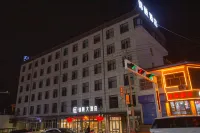
Hotel próximo a Fanshi
GGuest User 2024.05.04
Cost-effective, clean rooms, convenient eating around, Zhao Yiming snacks next to the store. It is very convenient to go to Lushan Scenic Area. It takes 75 minutes to drive to Wutai Mountain. It is to the north gate and there are few people. recommend.
Outstanding
91 avaliações
4.6/5
Preço a partir de
R$ 113
por noite



Hotel próximo a Fanshi
GGuest User 2023.08.20
The location and hardware are good. It's not far from Wutaishan Railway Station. You can see the iconic buildings of Hanshan Scenic Area outside the room window. The hotel lobby is grand, the breakfast is rich, and the room is clean. The square across the road opens at 6:30 in the morning. The music was very disturbing, and when we were checking in in the lobby, the two young staff at the front desk missed the check-in information, causing us to wait for a long time without being able to go through the formalities. They were unapologetic afterwards and felt that their professionalism needed to be improved.
Excellent
163 avaliações
4.4/5
Preço a partir de
R$ 190
por noite
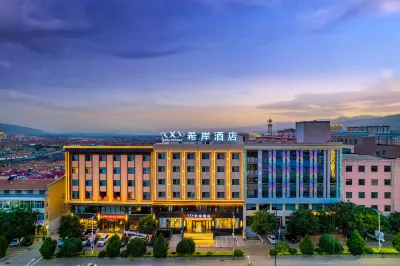


Hotel próximo a Fanshi
GGuest User 2024.09.26
The newly opened hotel this year, the color matching is quite amazing as soon as you enter the lobby. There are local small scenes on each floor, suitable for punching in and taking pictures. The room is spacious and comfortable, and the paintings in the details are very attentive and look very eye-catching. Dinner is eaten in Xiangge Lili near the hotel. The taste of the dishes is very good and the quantity is large. It is recommended.
Outstanding
281 avaliações
4.7/5
Preço a partir de
R$ 168
por noite


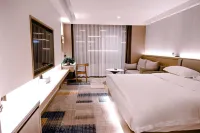
Hotel próximo a Fanshi
GGuest User 2023.10.03
It is a blind booking without evaluation. The newly opened hotel is near the town center. It is convenient to get on and off the highway. The overall room is clean and tidy. The full set of domestic ”TOTO” bathrooms. There are various small restaurants downstairs and across the road. It is more lively. I went there at 9 o'clock that night. The internal parking lot is a bit crowded. After waiting for a while, there was a reason for bathing in the hotel. I said that there were a few shortcomings. The soundproofing in the hotel was particularly bad. Someone was talking in the middle of the night. The content was clear, the shower leaked, and the floor towel was not provided. Finally, because it was the second day of passing by the accommodation, I had to hurry up and discuss providing simple early. Merchants refused to provide it on the grounds of outsourcing, and it has been 20 years since Trip.com , and this is the first time they have encountered this situation.
Excellent
68 avaliações
4.3/5
Preço a partir de
R$ 124
por noite
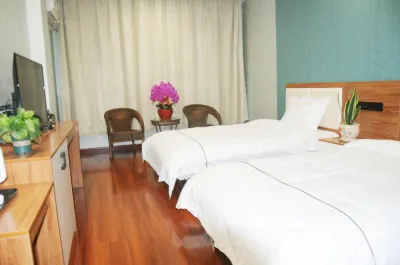


Hotel próximo a Fanshi
JJiguangxiwao 2023.05.05
賓館女老闆服務態度非常好,房間很大很整潔,而且視野也不錯,能夠看到遠處羣山上的積雪,臨街的房間晚上也很安靜,性價比很高。雖然距離繁峙汽車站稍有一點遠,但是出門走幾步就能打到車。距離繁華的濱河區域也是走路的距離,附近飯館和超市也都很多,所以感覺很不錯的。
Excellent
7 avaliações
4.4/5
Preço a partir de
R$ 70
por noite
Principais escolhas de hotéis adorados pelos viajantes em Fanshi
Ver tudo
Escolha dentre estes hotéis, que foram os mais reservados do mês passado
No.1
4.9/5
24 avaliação繁峙鑫圓祥賓館(迎賓街分店)
Hotel em Fanshi
"Clean and tidy""Great stay!"
Selecione as datas para ver os preçosNo.2
4.2/5
122 avaliaçãoHuaXia Hotel
Hotel em Fanshi
"Clean and tidy""Great stay!"
Selecione as datas para ver os preçosNo.3
4.4/5
7 avaliaçãoFanshi Qingqing Hotel
Hotel em Fanshi
"Good Location"
Selecione as datas para ver os preçosNo.4
4.7/5
8 avaliaçãoYanyang Hotel
Hotel em Fanshi
"Clean and tidy""Friendly owner"
Selecione as datas para ver os preçosNo.5
4.5/5
47 avaliaçãoFanshi Longhe Hotel
Hotel em Fanshi
"Clean and tidy""Great stay!"
Selecione as datas para ver os preçosNo.6
4.4/5
10 avaliaçãoXinshunyu Hostel
Hotel em Fanshi
"Good Location"
Selecione as datas para ver os preçosNo.7
4.2/5
66 avaliaçãoEDIO
Hotel em Fanshi
"Clean and tidy""Great service"
Selecione as datas para ver os preçosNo.8
4.0/5
46 avaliaçãoYunlai Apartment Hotel
Hotel em Fanshi
"Clean and tidy""Great stay!"
Selecione as datas para ver os preçosNo.9
4.9/5
121 avaliaçãoChaotai Inn
Hotel em Fanshi
"Clean and tidy""Great rooms"
Selecione as datas para ver os preçosNo.10
4.8/5
15 avaliaçãoFanzhi Suiyuan Inn (Wutaishan Railway Station)
Hotel em Fanshi
"Clean and tidy"
Selecione as datas para ver os preçosVeja opiniões de outros viajantes sobre hotéis em Fanshi
Ver tudo
Confira avaliações genuínas e informações úteis de viajantes reais que ajudarão a encontrar a estadia perfeita para você
4.9/5
Perfect
GGuest User雖然沒有毗鄰車站,但是也非常近,走路五分鐘,位置非常安靜,智能化設施,雖然大堂不是富麗堂皇,但酒店房間設施非常好,又新又乾淨又全,老闆太用心了,旅途中大部分需要的都給你備上👍,下次一定還會住這家,下車第一站就是滿滿的開心,盡掃車程中的勞頓。優秀!
4.8/5
Outstanding
GGuest UserEnvironment, sanitation, facilities, everything is fine, and the public bathroom is quite clean. The location is on Xiangyang Road, a relatively prosperous area near the bus station. It is convenient to travel and is suitable for business trips.
4.6/5
Outstanding
GGuest UserSanitary, comfortable, quiet, especially suitable for living with the elderly and children, recommended!
4.6/5
Outstanding
Good location, good bath water, convenient eating (there is a restaurant at the door) 2 bedside latch, one of which is bad, hope to repair.
4.5/5
Excellent
GGuest UserI didn’t come out on May 1st. I was going to Wutai Mountain today. The friend who came out last time came back and told me that this hotel is quite good, because my friend came to Wutai Mountain for the first time. The boss also told them how to go up conveniently and where to pay attention to what, Otherwise, I really don't know where to go after I go up.
4.5/5
Excellent
GGuest UserThe boss is very good, the hotel environment is also very good, the boss is enthusiastic to help contact the car
4.4/5
Excellent
GGuest UserThe room was very clean, the facilities were complete, the boss was very enthusiastic, and there was a feeling of going home. The boss was very enthusiastic to introduce me to the tourist attractions here, where to take the car, where to go up the mountain, so that I had to walk a lot less wronged roads.
4.2/5
Very Good
GGuest UserClean and hygienic.
Jinhua Hotel (Fanshi Shahe Railway Station No. 2)
Hotel em Fanshi
Preço por noite a partir de: BRL 75
3.7/5
AAnonymous UserThe hotel environment is convenient for parking, the stay is fast, and the room is more comfortable. The details touched the hearts of people, and a medium hotel also made the details other than the accommodation surprising. When you touch it, what you look at, you will have an unexpected discovery.
3.5/5
AAnonymous UserI feel that the hotel is quite old, the floor of the room is not flat, the sanitary conditions are average, but the price is cheap, the room is not very big, but it is not small, in general, it is generally the same.
O que os viajantes falam sobre as atrações de Fanshi
Descubra esses lugares que valem a pena visitar em Fanshi e selecione um hotel próximo para sua maior comodidade
Qishan Cultural Tourism Scenic Area
MM34***15It was already National Day when I went. The weather was a bit cold and the wind was a bit big, but it did not affect the scenic spot. It was a niche scenic spot. It was very careful and the performance was great. It was a little bit less food around. It was all barbecue and snacks. It would be better if there were stir-fried dishes.
yan shan si
水水漫三楼Yanshan Temple, located 40 kilometers southeast of Fanshi County, Zhangzhou City, Shanxi Province, Wutai Mountain Beiqi Tianyan Village, formerly known as Lingyan Courtyard, sitting north facing south, covering an area of 8,000 square meters, was founded in Jinzhenglong for three years, Yuan Yanxu for two years, and there were many supplements in the Ming and Qing Dynasties. A large number of buildings, natural landscapes, social life, character behaviors in the Yanshan Temple murals are the real reflection of social life at that time, providing precious materials for future generations in architecture, history, politics, etc. In addition, the cultural connotation of the Yanshan Temple murals is also very distinctive. The embodiment fully reflects the phenomenon of the integration of national culture. The large number of rich golden murals retained by Yanshan Temple have vividly displayed the charm of mural art for future generations with their colorful content and grand layout and memorable self-cultivation. Yanshan Temple has been announced as the second batch of key cultural relics protection units in the country. The existing buildings in the temple are relics of the Yuan Dynasty, and the rest are relics of the Ming and Qing Dynasties. The large brick Buddha altar in the temple has eight statues of Buddha, Bodhisattva, disciples, and King Kong, all of which are original works of the Jin Dynasty. The surrounding walls are preserved murals by King Dading's seven-year palace painter Wang Qian. The west wall is the story of Buddha, the east wall is the story of the change and the story of the birth, the plot is changeable, magnificent, the heavens and the earth, the court, the mirage, the clouds are not, the mountains and the gardens, the baby play, the officials and the noble people, everything, is the study of the Song and Jin period religion, architecture, art valuable materials. The picture composition is rigorous, the pen is strong, the architecture is magnificent and exquisite, the characters are realistic, the color is thick, the technology is pure, and it is an excellent work of the Golden Dynasty mural.
Gongzhu Temple
渭渭南松赞干布Princess Temple is located in Dongsheng Village, Fanshi County, Zhangzhou City, Shanxi Province. It was built in the Northern Wei Dynasty and was rebuilt in the later generations. It covers an area of 4,347 square meters and has three courtyards. The main buildings are Shanmen, Crossing Hall, Wei Shu Hall, Daxiong Palace, Jialan Palace, Mawang Palace and so on. More valuable are the murals and colored plastics built in the Ming Dynasty hall and the temple of the great male.
Beitai Yedou Peak
亮亮点liangpointThe top of Beitai Peak is on the side of Yunfu Mountain, with its peak touching the Dipper, called Yedou Peak. With an altitude of 3,058 meters, Yedou Peak is the highest peak among all the peaks of Wutai Mountain and the highest point in North China, known as the "Roof of North China". This is the best place to view the scenery of the hinterland of the platform.
Binhe Park (Binhe North Avenue Branch)
奔奔跑吧21.0975The Luo River flows through from here onwards. There is a playground in the north, and the south is relatively quiet and suitable for running. There are also many green plants on both sides. The night view is also good at night. There are many lights. There are also food stalls on the roadside where you can sing. It is a good place for citizens to take a walk after dinner.
Mimi Temple
山山西当地向导梁中华The secret temple is located outside the Wutai Mountain Scenic Area, about 60 kilometers away from the Wutai Mountain Scenic Area. There are very few tourists, extremely hidden, and the name is so famous. There is a dragon cave in the back mountain of the monastery. The legend is that it is a Wulong cultivation place with excellent scenery.
Perguntas frequentes sobre Fanshi
Quais são os hotéis mais procurados em Fanshi?
Há muitos hotéis bastante procurados em Fanshi. Esteja você viajando a negócios ou de férias, , Yiyuan Business Hotel e Xi'an Hotel (Xinzhou Fanzhi County Government Store) estão entre os hotéis preferidos.
Qual é a tarifa média de hotéis em Fanshi?
Para hotéis em Fanshi, o preço médio durante a semana é de R$ 136, o preço médio nos fins de semana (sexta a sábado) é de R$ 137.
Quais hotéis em Fanshi oferecem café da manhã de alta qualidade?
Fengze International Hotel,Yiyuan Business Hotel e Xi'an Hotel (Xinzhou Fanzhi County Government Store) oferecem café da manhã de alta qualidade. Comece seu dia com um delicioso café da manhã!
Quais hotéis em Fanshi são recomendados para viajantes com crianças?
Qi Yun Ge Hotel e Qiaojia Hotel (Wutaishan Railway Station Branch) são muito adequados para viagem em família. Desfrute de uma viagem com seus filhos e outros membros da família!
Quais hotéis em Fanshi oferecem academia?
, Yiyuan Business Hotel e Xi'an Hotel (Xinzhou Fanzhi County Government Store) oferecem academia. Você pode fazer seus exercícios físicos mesmo durante a viagem.
Quais hotéis em Fanshi permitem animais de estimação?
Yiyuan Business Hotel, EDIO e Qi Yun Ge Hotel permitem animais de estimação. Leve seus animais de estimação na sua estadia!
Quais hotéis em Fanshi possuem piscina?
, Fengze International Hotel e Fanshi Xinjiale Homestay são hotéis com piscina. Hospede-se em qualquer um desses hotéis e aproveite a piscina!
Quais hotéis em Fanshi oferecem Wi-Fi gratuito?
Seja uma viagem a negócios, seja de férias, boa conexão de internet é uma condição essencial para viajar. , Yiyuan Business Hotel e HuaXia Hotel são hotéis muito procurados com wi-fi gratuito.
Quais hotéis em Fanshi oferecem serviços de transporte de/para o aeroporto?
Não conhece bem Fanshi? , Yiyuan Business Hotel e Xi'an Hotel (Xinzhou Fanzhi County Government Store) oferecem serviços de transporte de/para o aeroporto.
Quais hotéis em Fanshi oferecem spas que valem a pena conhecer?
Teve uma viagem cansativa? , Yiyuan Business Hotel e Xi'an Hotel (Xinzhou Fanzhi County Government Store) oferecem serviços de spa muito bem avaliados.
Quais promoções de hotéis estão valendo para Fanshi?
O Trip.com oferece várias promoções e descontos para usuários durante todo o ano. Você pode acessar a página de promoções para conferir quais promoções estão disponíveis no Trip.com.
Informações sobre viagens locais
| Maior preço | R$ 584 |
|---|---|
| Menor preço | R$ 34 |
| Quantidade de avaliações | 5,871 |
| Quantidade de hotéis | 166 |
| Preço médio (dias úteis) | R$ 136 |
| Preço médio (fins de semana) | R$ 137 |